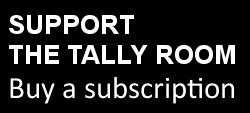On Thursday, we saw former Labor Senate leader Stephen Conroy come out attacking the new Labor leadership rules pushed through by Kevin Rudd during his very brief second stint as Prime Minister.
He said the Coalition are “getting away with murder” while Labor’s leadership remains in a vacuum.
“We’ve got no leader, no frontbench, no shadow spokespersons who are able to lead the debate for us, and this will descend into complete and utter farce,” he said.
“We have a situation where the US might bomb Syria [and] we have no official party spokesman, we have no leader.
“These new rules were a farce when they were put in place – rules that have left us helpless.”
It’s not surprising that Conroy isn’t a fan of a process that takes power out of the hands of the Labor leadership and gives it to members, but there are real questions raised about the downsides of lengthy leadership contests.
The reality is that, in many countries, parties go an extended period of time without a permanent leader while choosing a successor. In this period, an interim leader is usually appointed.
A lot of the details about how Labor will conduct their contest remain vague, unsurprisingly considering that the idea only emerged a few months ago: it’s unclear if the ‘rank and file’ vote will be announced before the caucus votes, and it seems likely that the most senior leader not running will take over as acting leader, which would be Penny Wong if Anthony Albanese decides to run.
In 2010, when the UK Labour Party chose a new leader following Gordon Brown’s defeat, Brown quickly resigned and his deputy Harriet Harman served as acting leader throughout the contest, and there was a full panel of shadow ministers during this period.
There is no reason to think the same won’t apply in the case of the ALP’s leadership election.
Right now, the New Zealand Labour party is going through the same process as Australian Labor. The party decided after the 2011 election to implement a direct election model, where 40% of the vote is cast by members, 40% by MPs and 20% by unions. Apart from the 20% union vote, this reflects the model proposed for the ALP.
At the moment three candidates are running: Grant Robertson, David Cunliffe and Shane Jones have nominated, and are out campaigning. All three have been given the opportunity to ask questions of the Prime Minister during Question Time, and have participated in at least one televised debate.
Of course it’s possible that a direct leadership election can reveal divisions and bring up conflict, but the last three years in the federal ALP have demonstrated that divisions and conflict can get out anyway.
On the other hand, a direct election has the potential to engage new supporters, give members more of an investment in supporting the party leadership and providing the leadership candidates a platform to present their messages.
It’s also true that, in most circumstances, candidates who engage in negative or nasty campaigning won’t be rewarded by party members, even if swinging voters may do so in a general election.
Of course, a direct election of a leader creates a different incentive when it comes to Australia’s culture of cuttign down leaders. I’ve previously blogged about how Australian leaders tend to be much more likely to be replaced withuout facing an election than leaders in similar countries that directly elect their leaders.
If a leader is directly elected, they have a greater mandate from the members and have moral authority which will limit the power of the MPs to remove them (no wonder Conroy isn’t a fan). The 60% threshold (75% in government) practically limits MPs’ power, but the requirement to have a direct ballot also makes a sudden coup impossible.
These factors then makes the idea of cutting down a leader less attractive, and motivate MPs and members to support them in situations where they might otherwise look for an alternative.
Because of this, it’s possible that, for once, the leader who wins this contest may be capable of sticking around in the long term.
Read my previous posts about direct election.
Read David Farrar’s analysis of the NZ Labour leadership contest.


